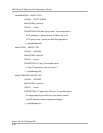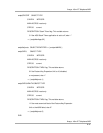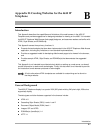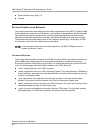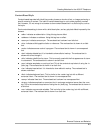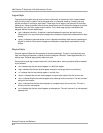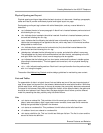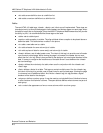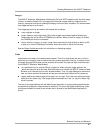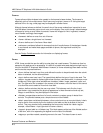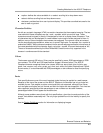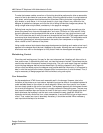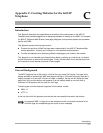
4600 Series IP Telephone LAN Administrator’s Guide
Browser Features and Behavior
B-6
■ <dt> adds a new definition term to a definition list.
■ <dd> adds a new term definition to a definition list.
Tab les 5
The new HTML 4.0 table tags, <thead>, <tbody> and <tfoot> are all implemented. These tags are
intended primarily to allow printed pages to have headers and footers appear on each page, when
the table is longer than a single page. Since the 4630 IP Telephone Web Browser does not provide
the ability to print, it is recommended that these tags not be used.
■ <table> starts a table layout.
■ <caption> adds a caption to a table. The align attribute allows a caption to be placed above or
below the table. This attribute has no effect in the phone.
■ <tr> adds a new table row to a table.
■ <th> adds a header for some column(s) of a table.
■ <td> adds a piece of data for some row(s) and column(s) of a table.
■ <thead> defines a set of table header rows. The intent of this tag is to provide a set of header
rows for each printed page. While viewing the page in a browser, the header has no more
effect than the <th> tag. What it does provide for the designer is a more logical breakout of the
data. It is easy to recognize the header area of the table since it is set between the <thead>
start and end tags.
■ <tbody> defines the main body of a table, when used in conjunction with the <thead> and
<tfoot> tags.
■ <tfoot> defines a footer for a table. This tag may contain multiple rows. Like the <thead> tag,
the intent of this tag is to provide a set of footer rows for each printed page. Viewing the page
in a browser has no additional effect. And like the <thead> tag, this tag provides a logical
breakout of the data for the designer.
■ <colgroup> defines a column group. It may be used as a single definition of identical columns
or as a container for dissimilar columns. The span attribute defines what columns are parts of
each group.
■ <col> controls the appearance of one or more columns within a column group.



